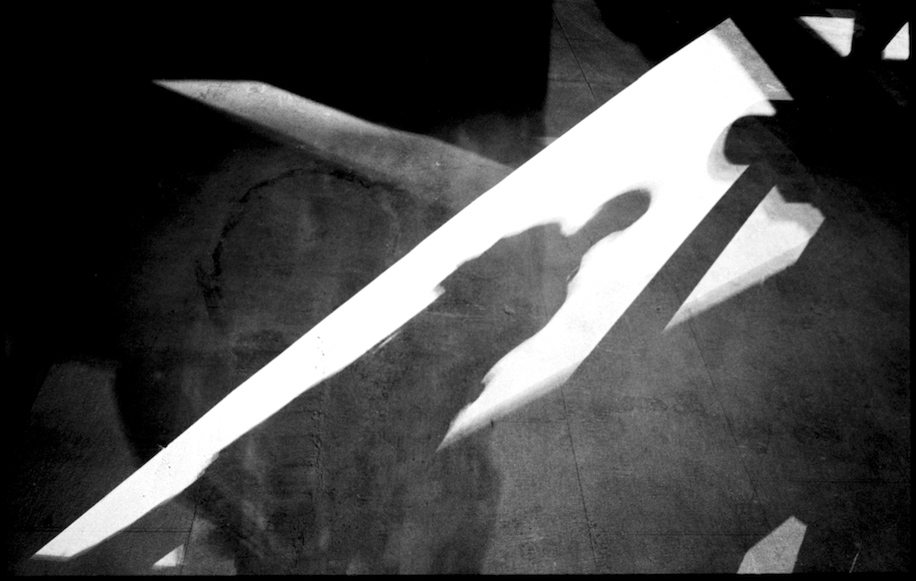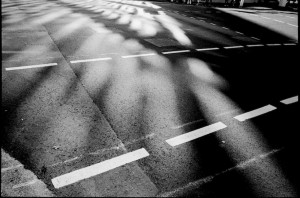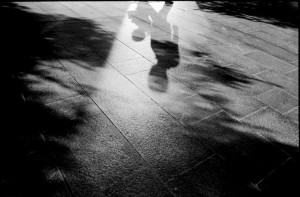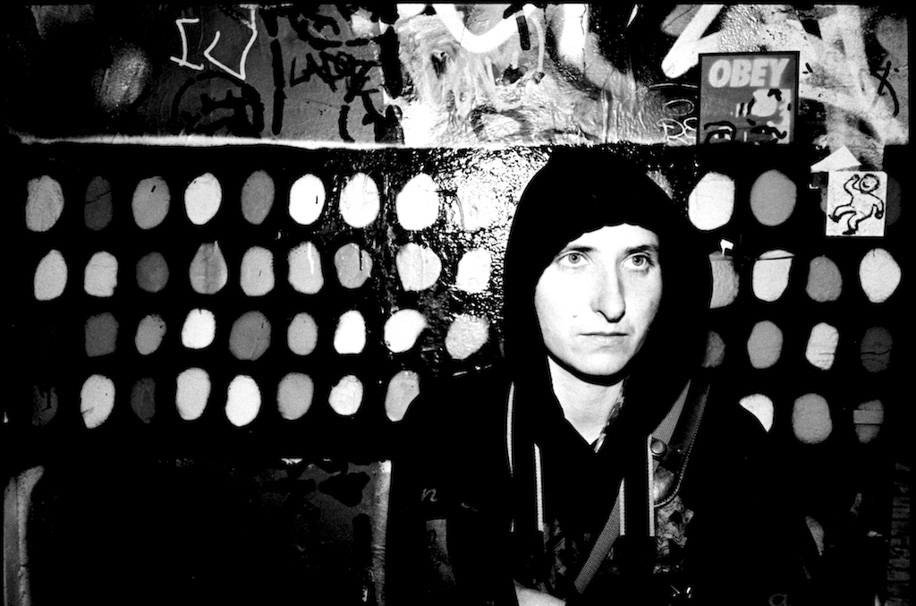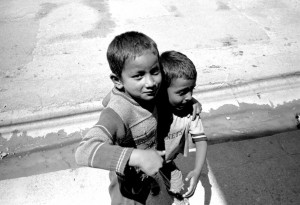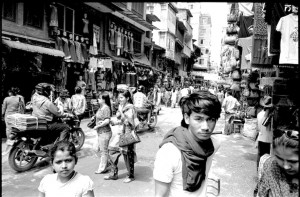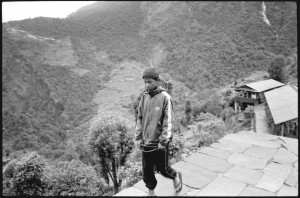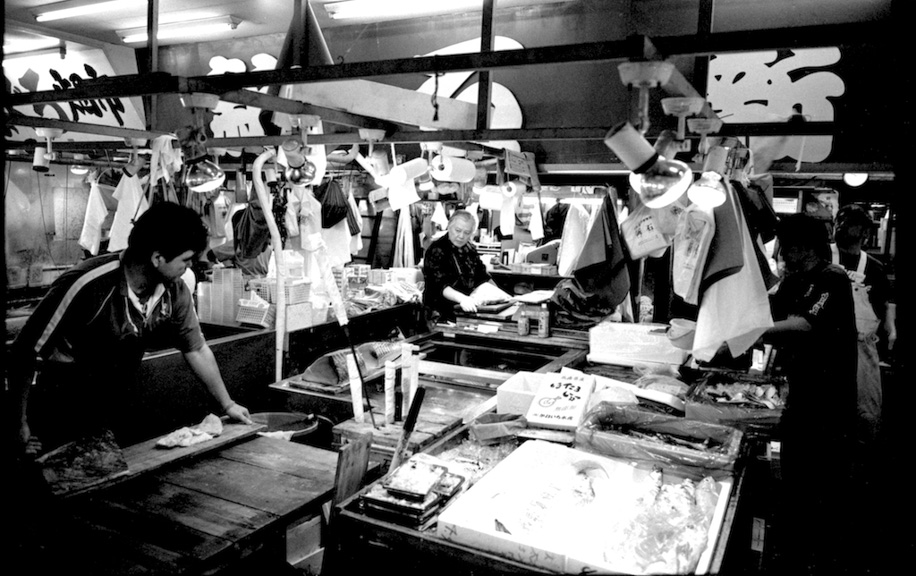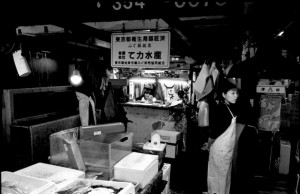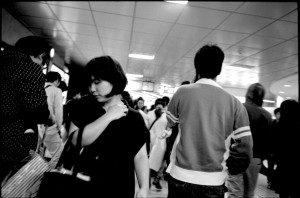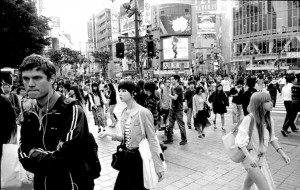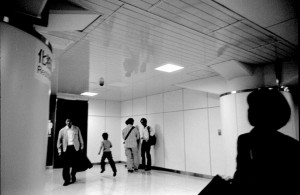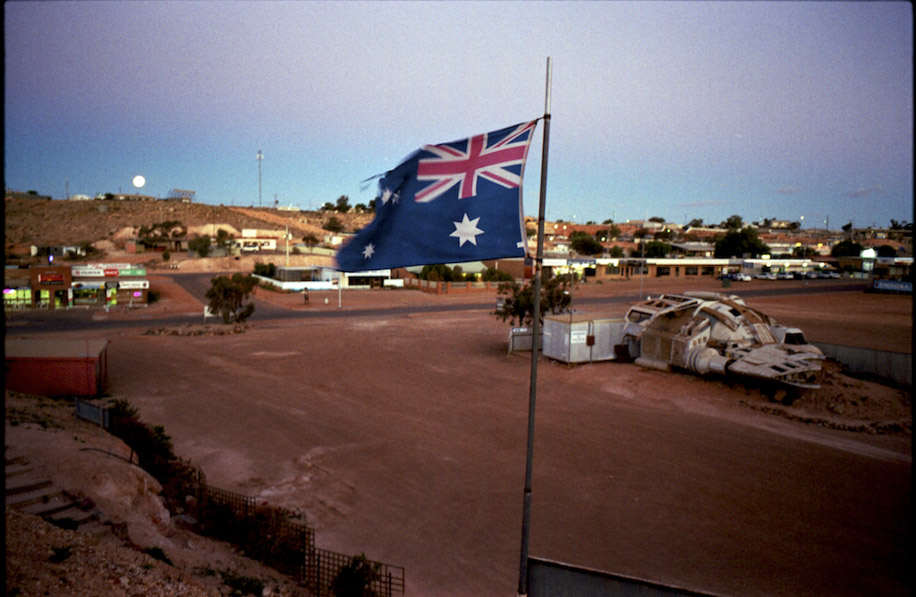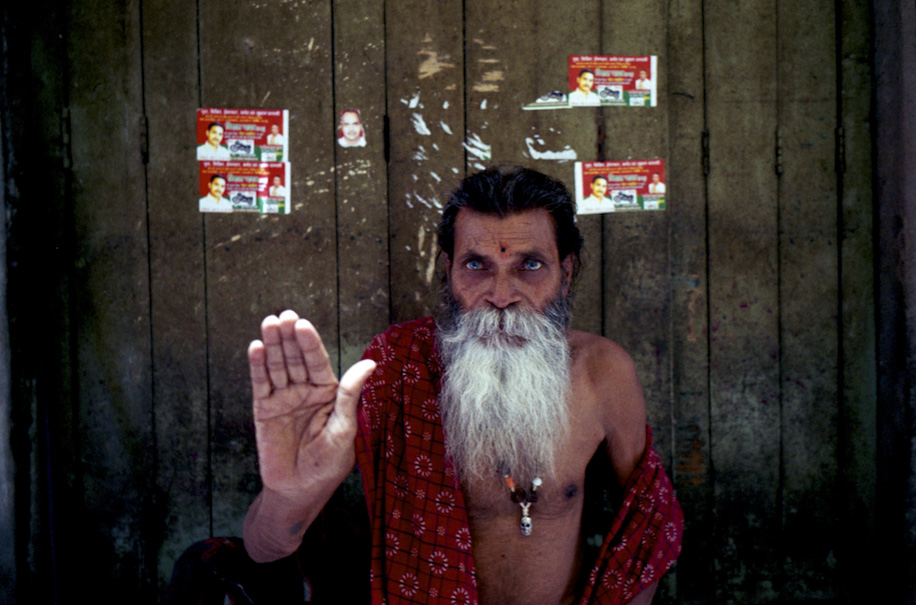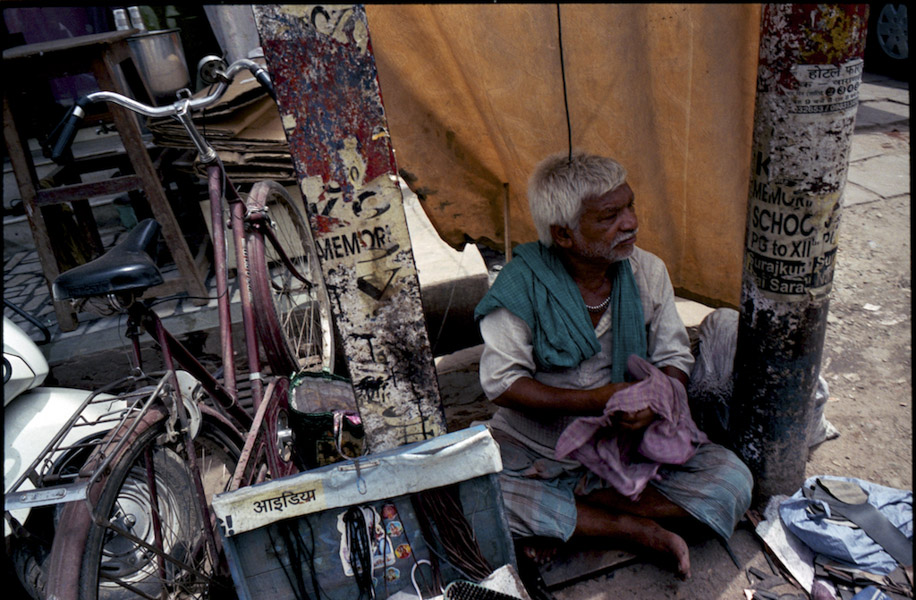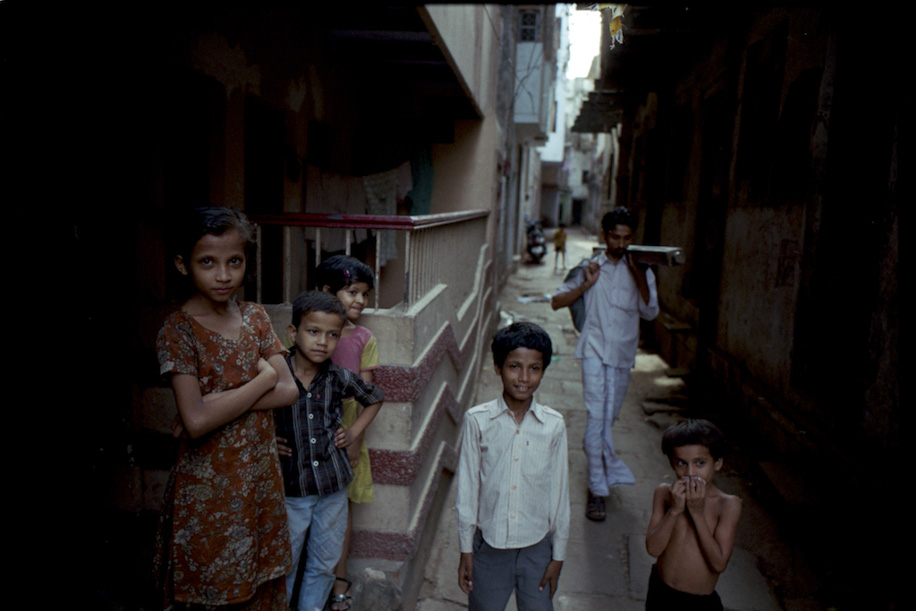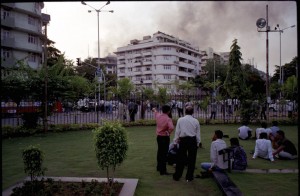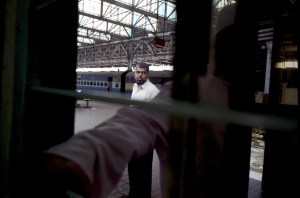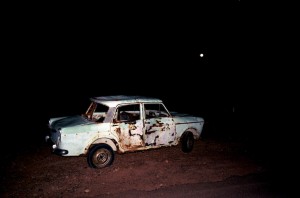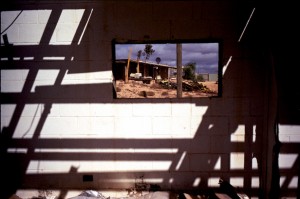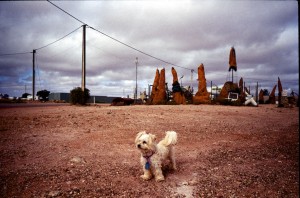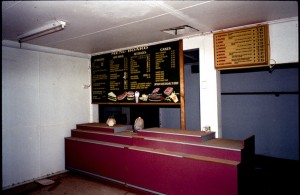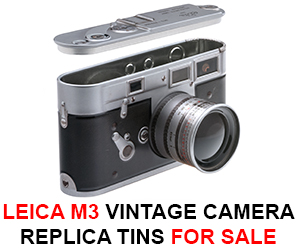Today’s guest post is by Iain Parker (www.zvezdaphoto.co.uk) who documented his trip to Japan, Australia, India and Nepal with a Leica M7:
In May-August of this year my wife Ulyana and I went on our honeymoon, four counties in three months, Japan, Australia, India and Nepal. Ulyana is a painter and I am a photographer. My choice of cameras for the trip were my M7 with 28mm Elmarit ASPH and an X100 for digital work, a small and relatively light weight kit. I chose the M7 over my a la carte MP with 50mm Summilux ASPH for the simple reason that the M7 is my trusty old work horse and the wider angle of lens would be more beneficial on the road. For street photography the M7 is an ideal tool, being that bit quicker to use in the field than the fully manual MP. I tend to use one camera and lens combination when travelling or working as I find this enables me to be present a lot more effectively than thinking about which lens is better to use, the camera and lens become part of you, the extension of the eye. Although it may appear to be a bit restrictive I find it easier to move myself in and out of the picture by this process.
I have owned several Leica M’s over the years including a digital model, but have always been drawn to the film versions, the M7 and MP with the lenses mentioned and with the edition of the 35mm Summarit, although the ‘cheaper’ 35mm lens in the Leica stable, it is a wonderful little lens that I prefer to the Summicron for its characteristics and picture quality. As with all photographic equipment using it in the field is the most important and you should trust your equipment implicitly not to let you down, and more so as a photographer, to get the best use out of it without gathering dust in cupboard.
We decided that we would choose the countries to visit on a simple basis, one each that we would most like to visit and two joint decisions. Ulyana chose Nepal and I chose Australia, the two joint choices were Japan and India. Japan has always been a source of fascination, the ultra modern and the ultra traditional sitting side by side. First stop Tokyo …
The first thing I should say about Japan is if you are planning on visiting there a JR Pass for the rail network is worth investing in before travelling. For a fixed fee you can go anywhere in Japan using the Japan Rail network, this will save a lot of time and money once in the country. Also the JR Pass makes getting around Tokyo much easier, it is a mega city. For example Tokyo to Kyoto and back would practically pay for itself. Travel tips to one side Japan and Tokyo in particular are a photographers paradise, the cities are a thriving metropolis and the countryside is very beautiful, the M7 and I were very much at home. Even though very early into the trip I was confident I had made the right choice in bringing the equipment that I chose. The depth of filed scale on the Leica lenses are a real asset for Hyper Focal work. The other quick thing I should mention about Japan is that it is illegal to smoke on most streets within the cities but you can in the bars and restaurants and in specially dedicated areas. We visited Kawasaki, Kyoto, Hiroshima, Fuji and Kawaguchiko while travelling in Japan, I must admit the sheer scale and vibrancy of Tokyo were my personal favourite places, although mount Fuji is especially beautiful. The Tsukiji fish market in Tokyo was a rich hunting ground for photographs and very good Sushi. All in all Japan was a hell of a great place to start our trip.
The thing that first struck me about Sydney is the light, as I have never photographed in the southern hemisphere before the low lying winter light of the city was especially fascinating. The multiple over lapping reflections from the buildings is a wonderful thing to work with. Australia as we know is a very big country to get around so we sat down and thought about our route around the place and what we would like to do and see. We settled on getting to Urulu (Ayers Rock) by road and rail with stops along the way, big road trips across some massive distances. Kiama, Melbourne, Adelaide, Coober Pedy and Alice Springs a distance of some 3000 plus kilometres all by public transport. Melbourne is a great city a very vibrant place with excellent cultural highlights and Penguins if you can get to see them. Also some good camera shops, one such place is Camera Lane on Little Bourke Street, where I bought a flash gun and a replacement lens cap for the one I had managed to loose. The other place I feel needs special mention is Coober Pedy, slap bang in the middle of the outback, it is an opal mining town that has seen some better days. The landscape is littered with abandoned mining equipment and these colossal mounds of excavated earth. Photographically its a very stimulating place, but after a while the air of melancholy that surrounds the place dose get to you. The landscape becomes a bit sad with the knowledge of how many lives and dreams have been consumed by the environment there.
Next stop India. India is the type of place that you will love or hate, often both at the same time. It is another huge country with a massive population, poverty and some breathtakingly beautiful places. There are so many sensory assaults that it is difficult at first to get your bearings. Varanasi is a case in point, one of the most holy cities in the world, and in the old town a real maze of back streets and dense population. After a while the constant bombardment from people does get a bit tiresome and even depressing. Oppressive might be a better choice of words. Just getting round the place can be a constant battle, but gripping to one side an amazing place. Also the caves at Elora and the temples at Kajuraho are a must, the skill of the carving is quite sublime. Somewhat over whelmed by India we had decided to move on to Nepal, but there is one final card to be played. I must admit I never thought the humble chip could be used as a weapon on mass destruction, but in the final stop in India it proved to be the case.
Nepal proved to be a real breath of fresh air next to India, after recovering from food poisoning exploring the country was a real pleasure. The Himalaya and in particular the Annapurna trek were both amazing and very hard work. I was a bit concerned being there during monsoon season but I am glad to say the M7 was still going strong throughout all the trials and tribulations it had been through. 40 plus degree heat, sunshine, torrential rain, dust you name it and it would still work faithfully. In Kathmandu I was fortunate enough to find the Ganesh Photo Lab, where I was able to get processed and contacted all my black and white film. Being able to see before coming home all the hard work had payed off was an immensely gratifying feeling, some things worked better than expected and somethings unfortunately not quite.
After getting back home and seeing the colour film, I am more than happy with the choice of using a film camera to photograph the trip. Part of the excitement is waiting and seeing what you have done. Arguably a digital M body would have given the immediacy, but there is a certain character to using traditional emulsion based equipment that is very hard to replicate. I am not against digital, I do use it in some areas of my work, but for me there is a simple pleasure in using analogue equipment and there is so much good equipment our there to pick and choose from. Film simply offers a different way of looking at and seeing the world around you.
The M7 more than justified my faith in it, small, compact and discrete with exceptional pictorial qualities. Just what you need in a camera.
If you have an interesting Leica related topic and would like to share it on LR, please contact me.

